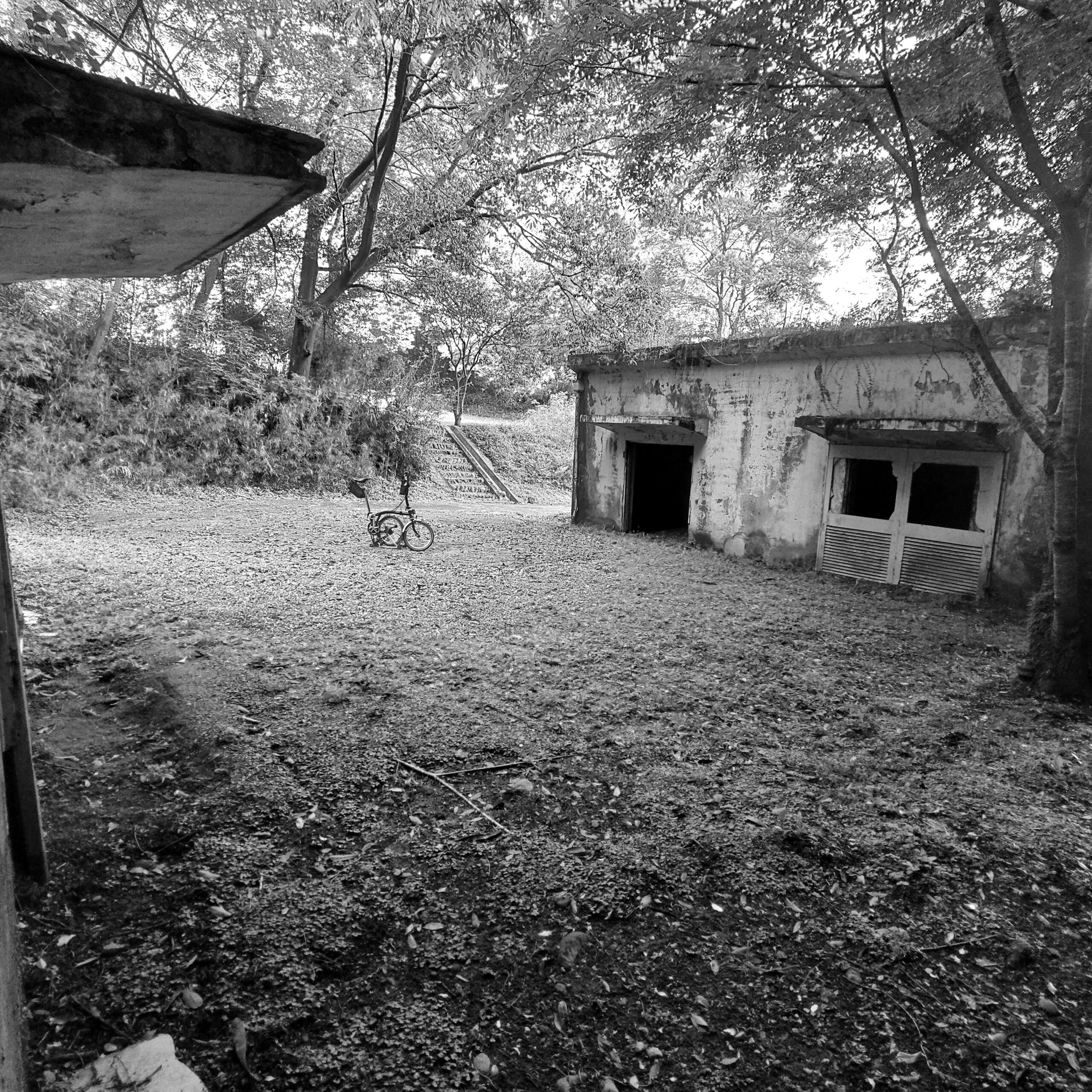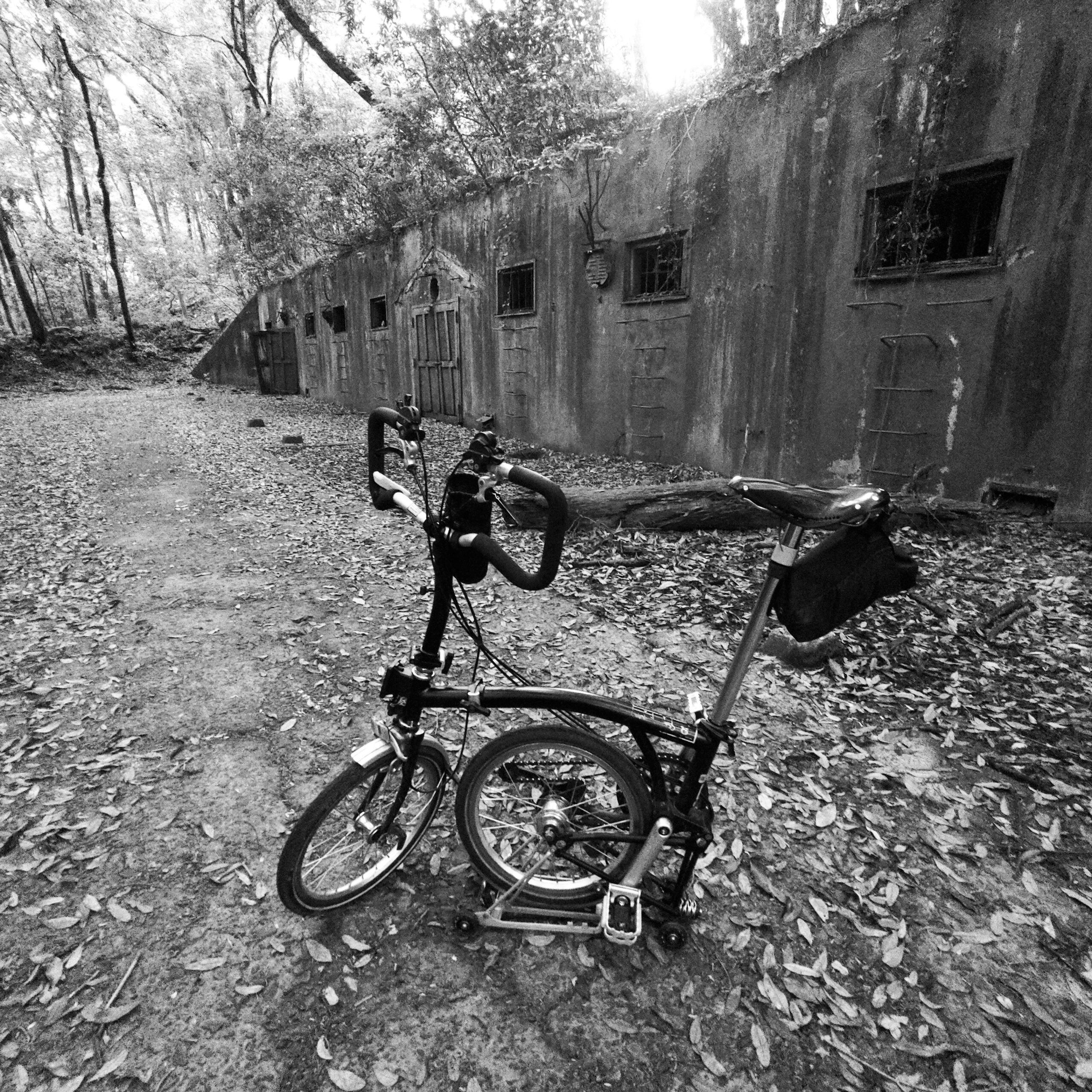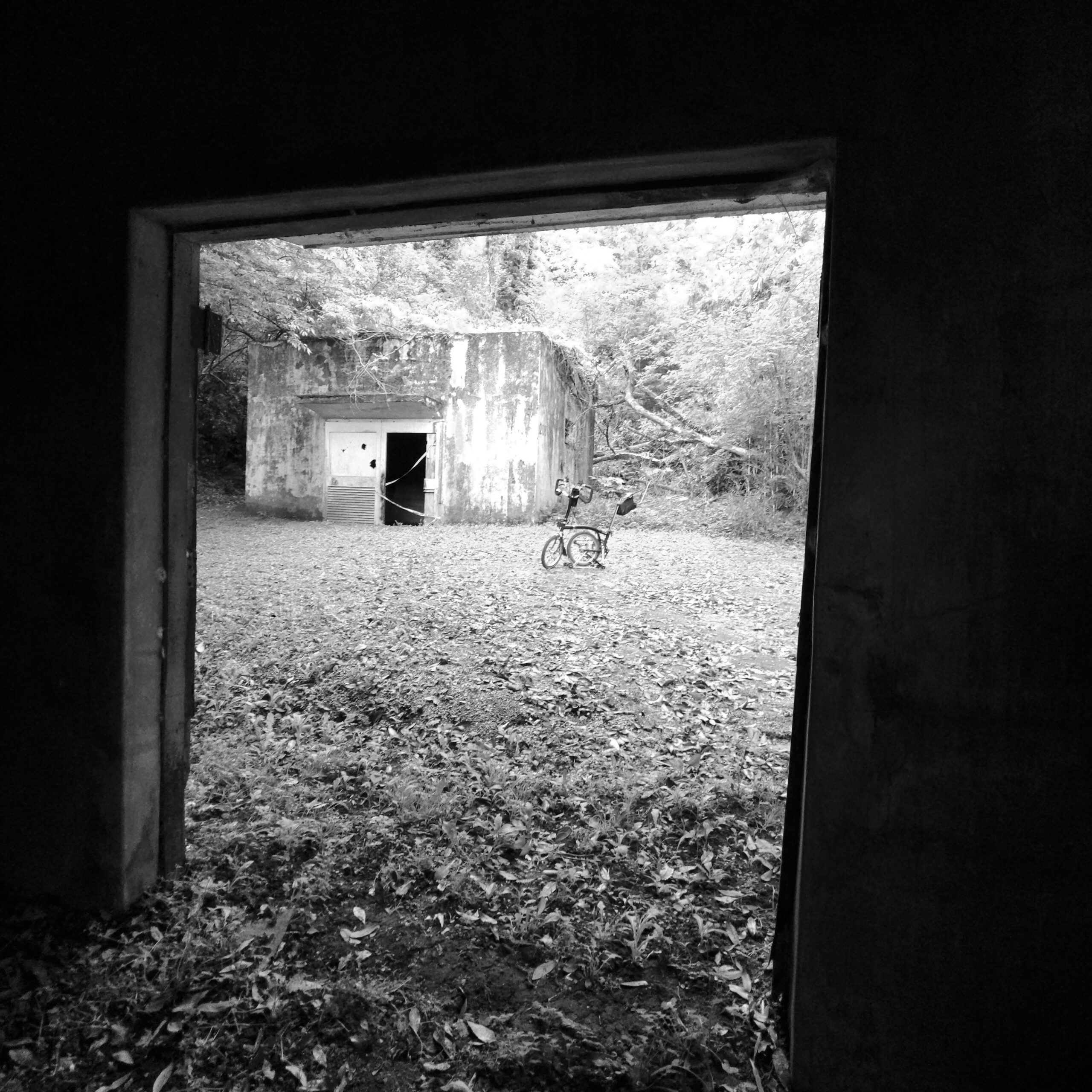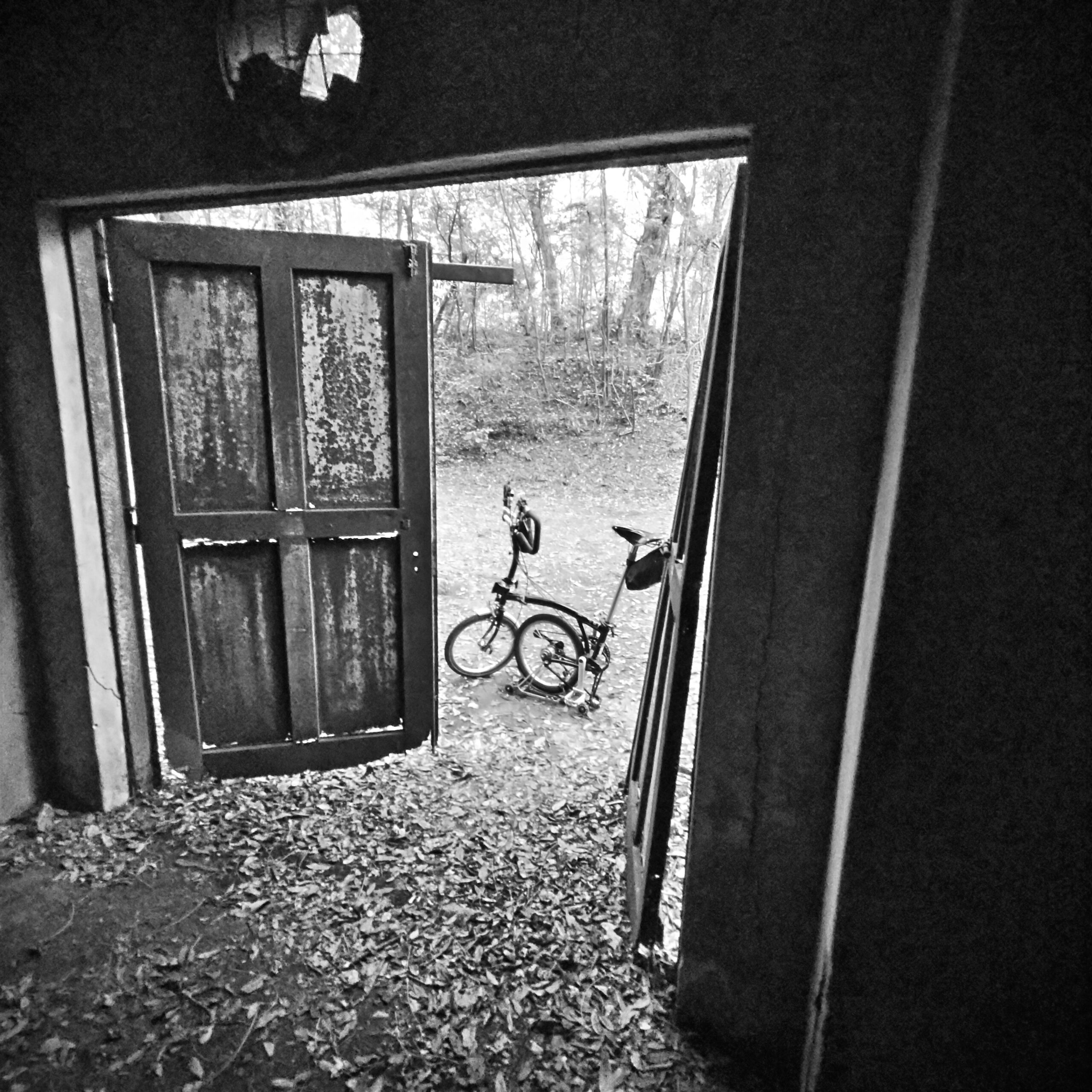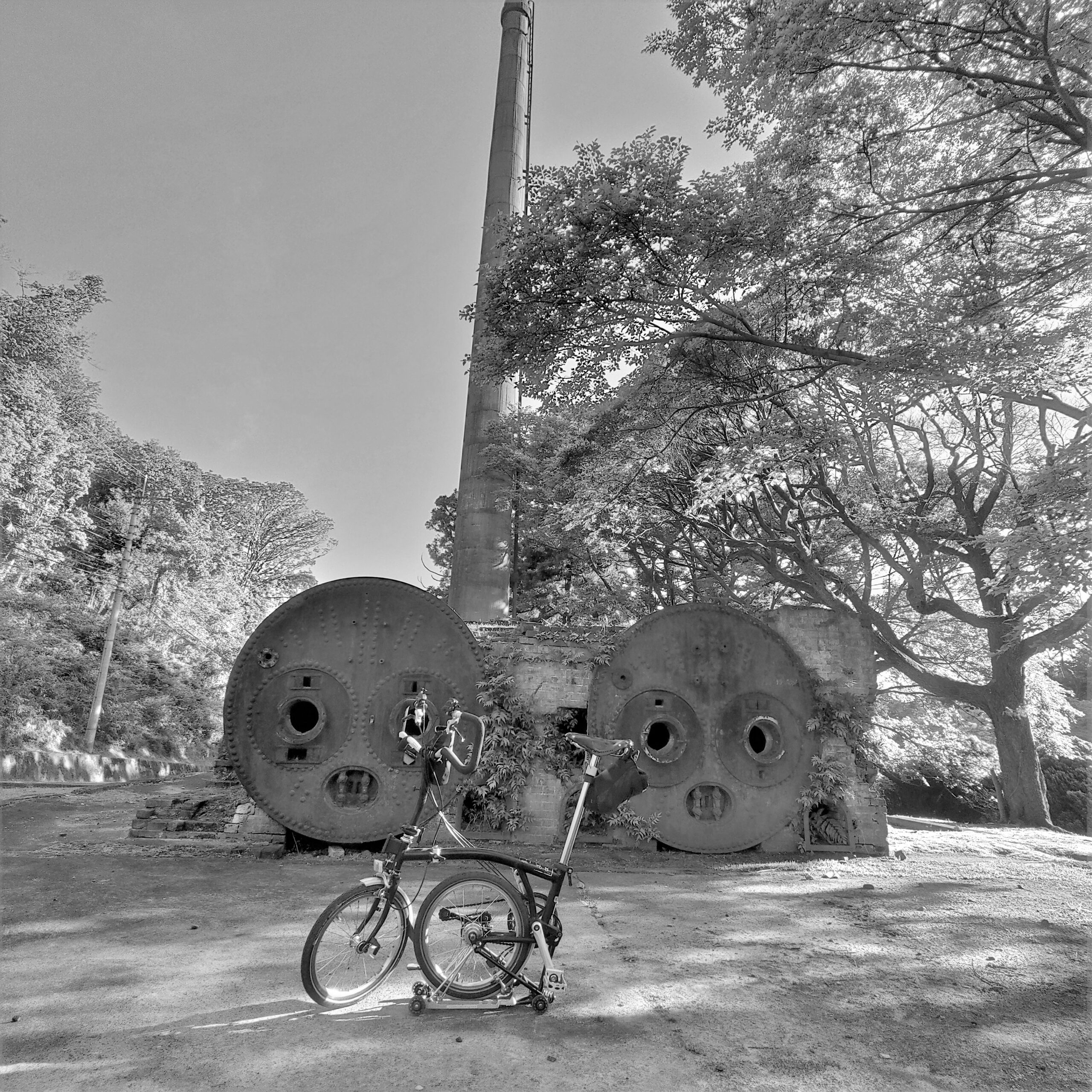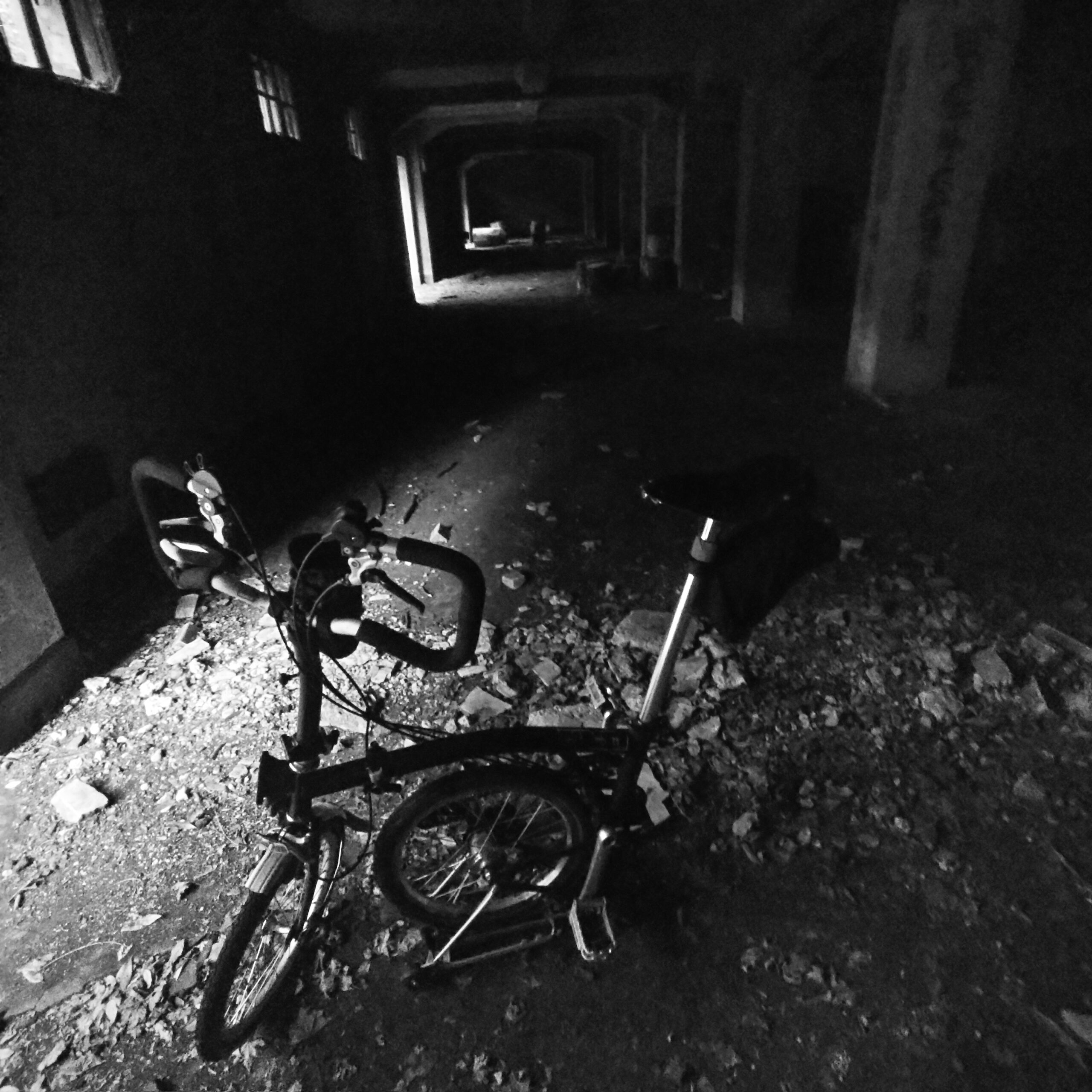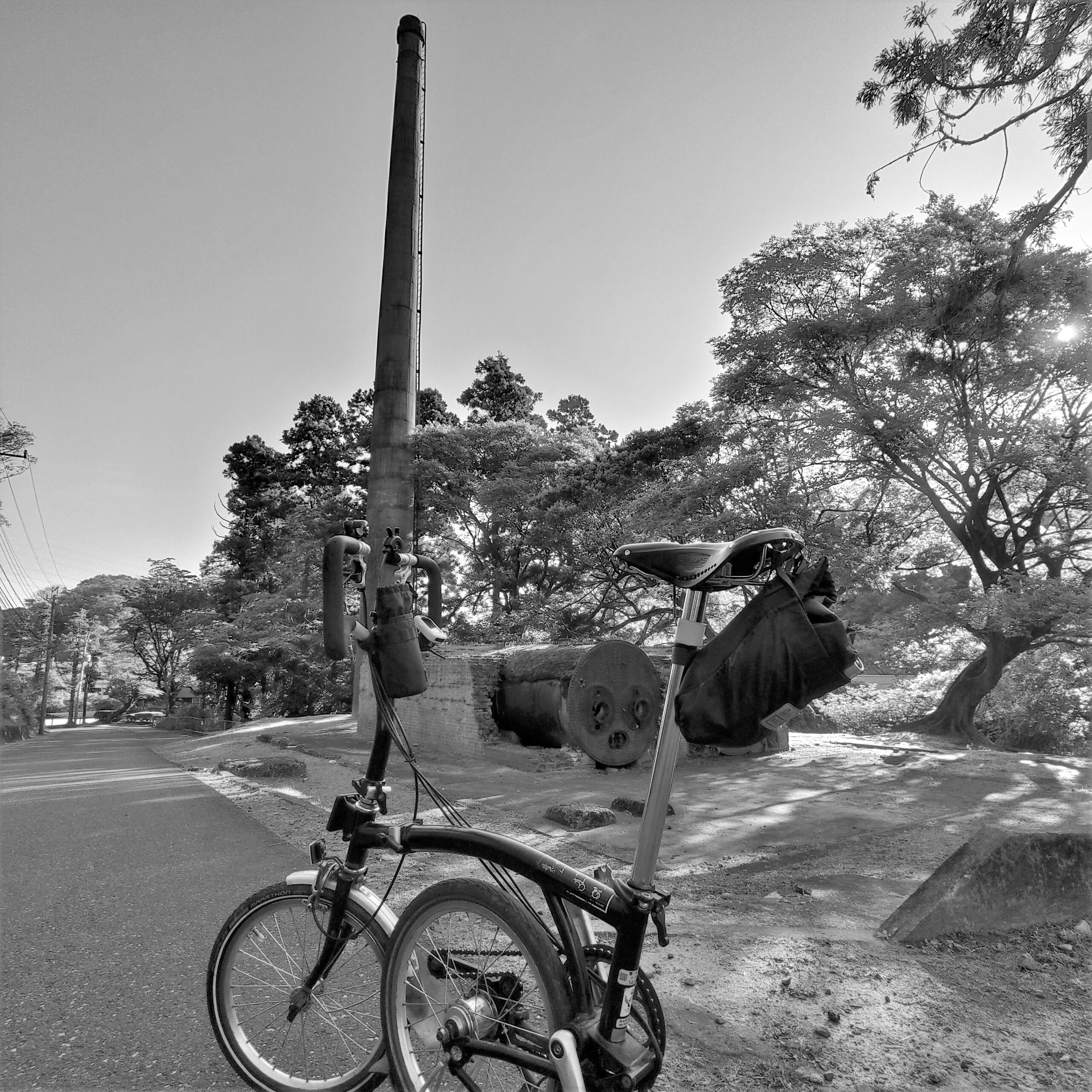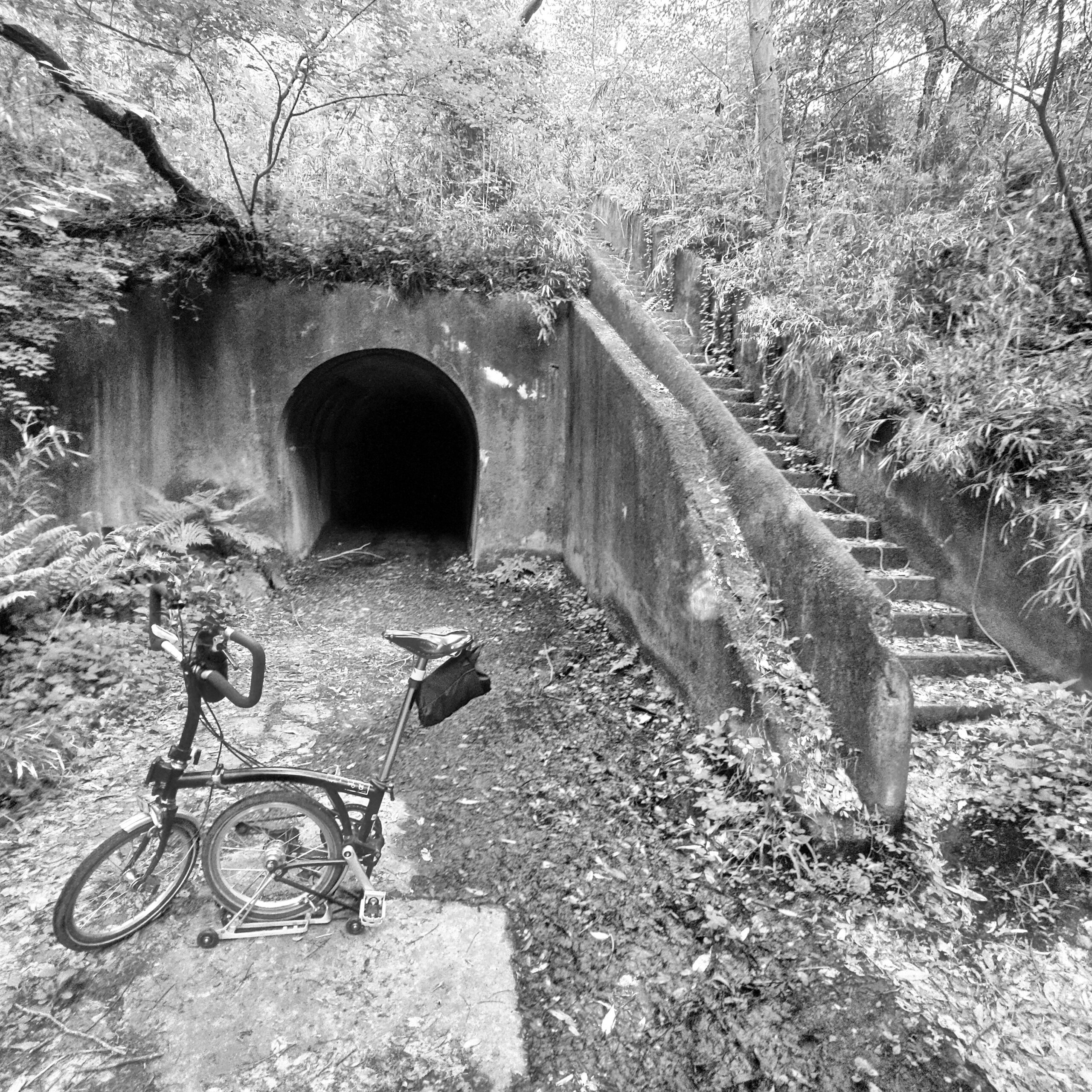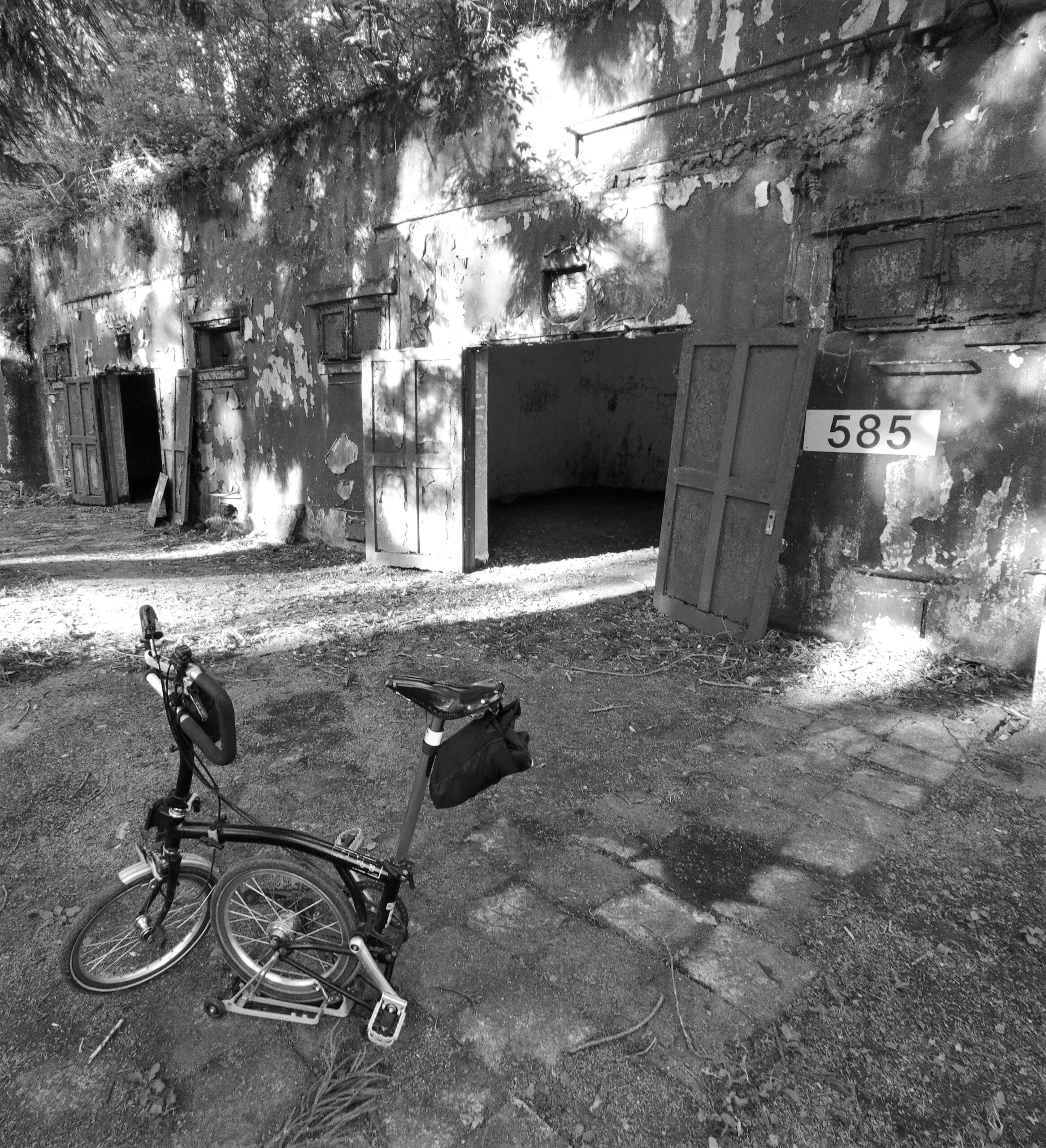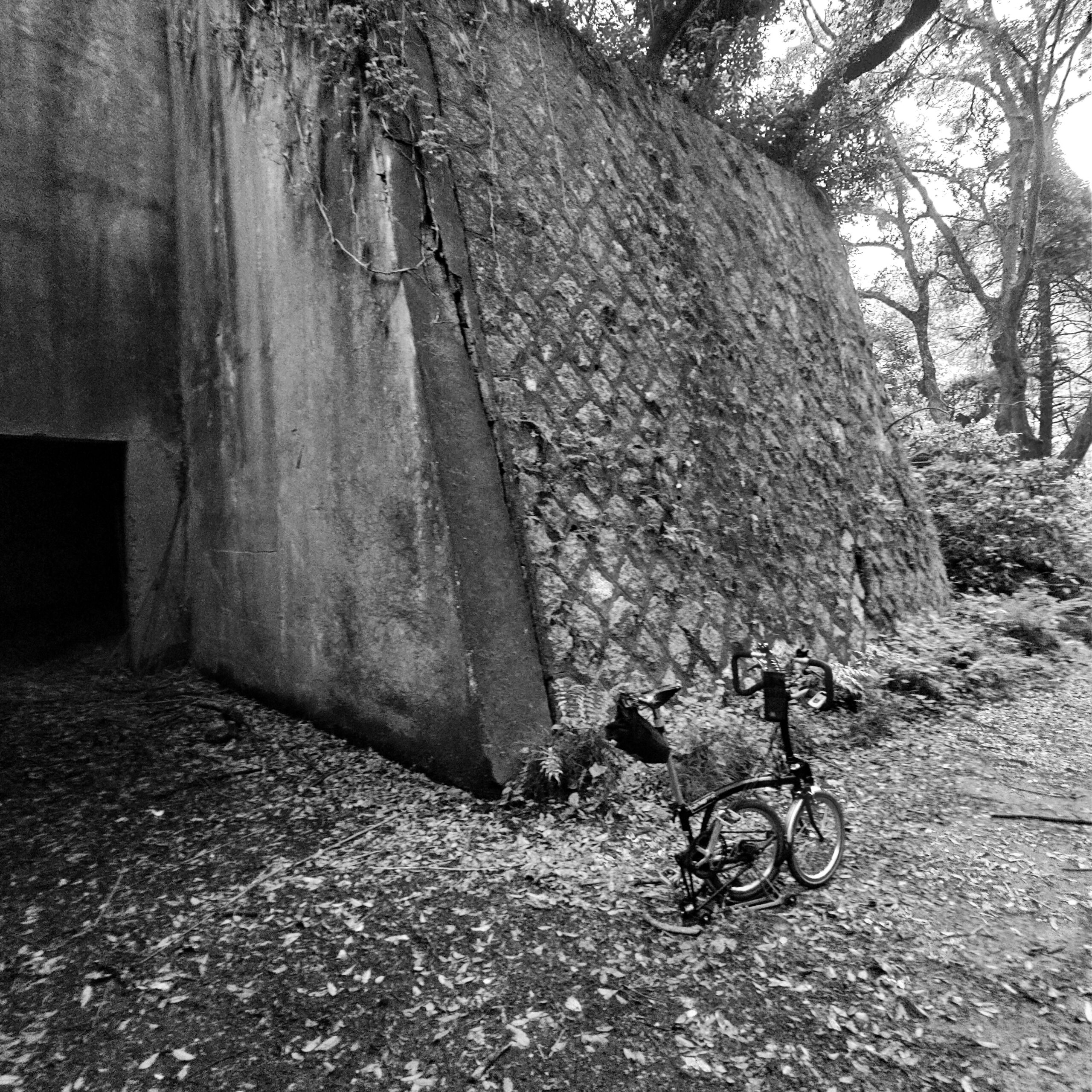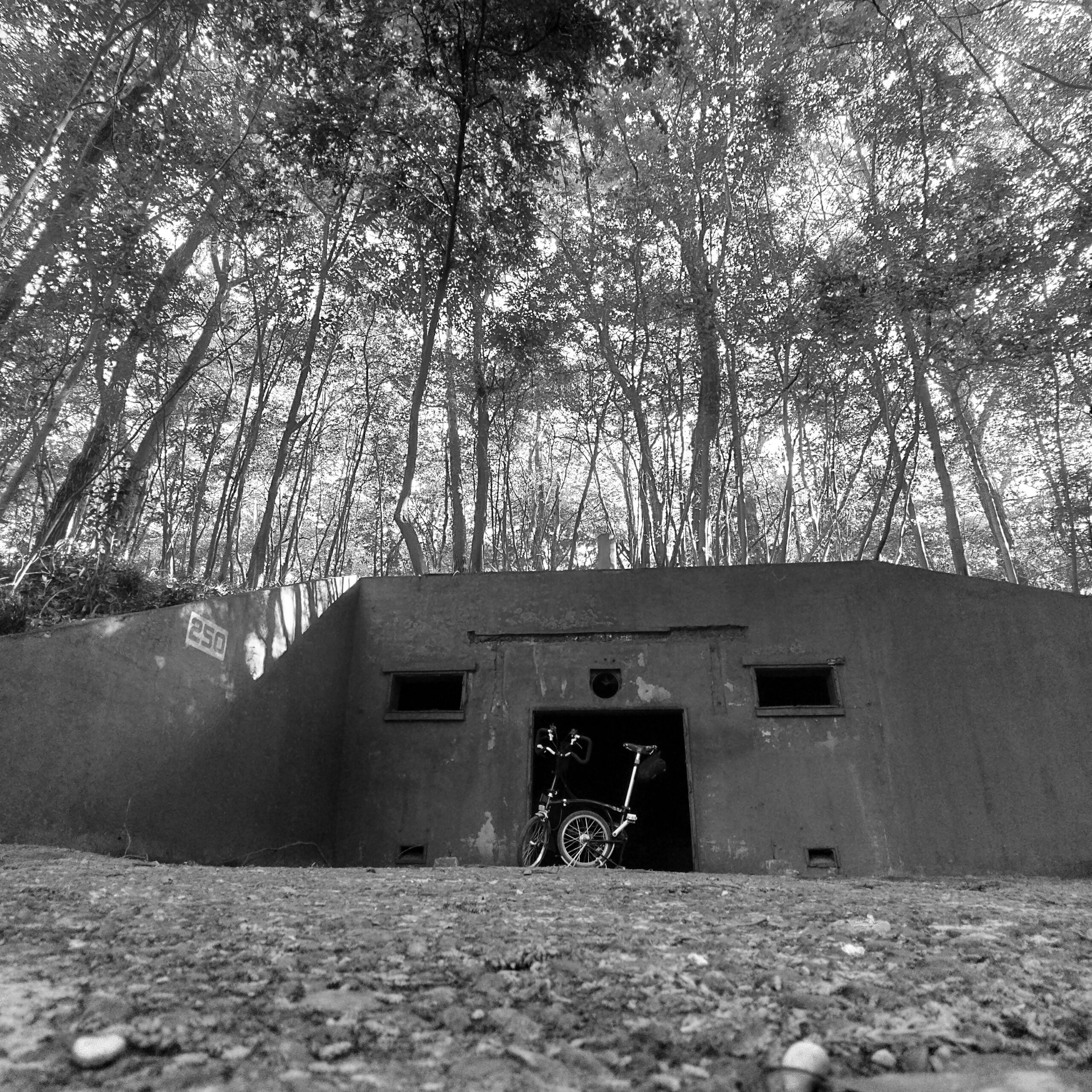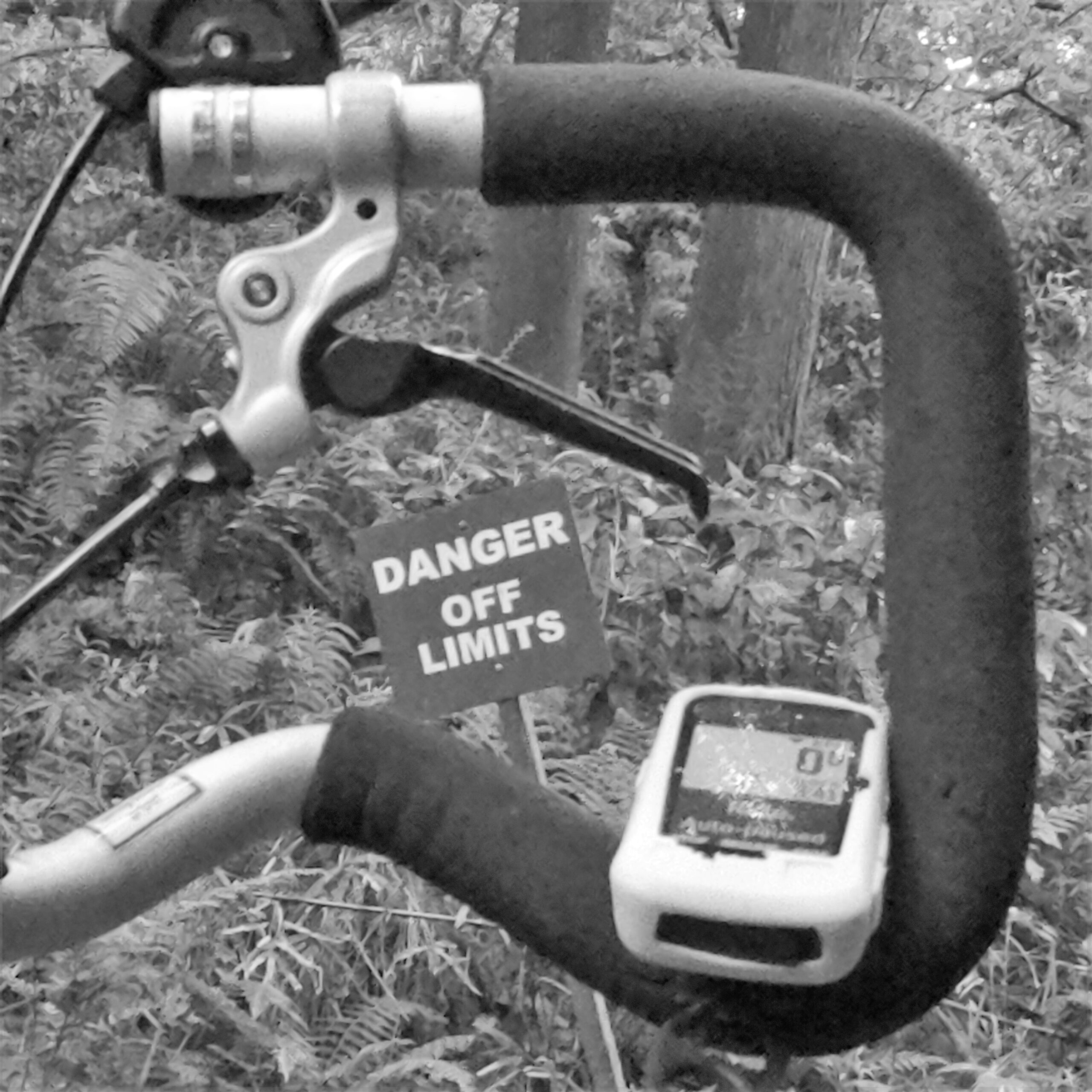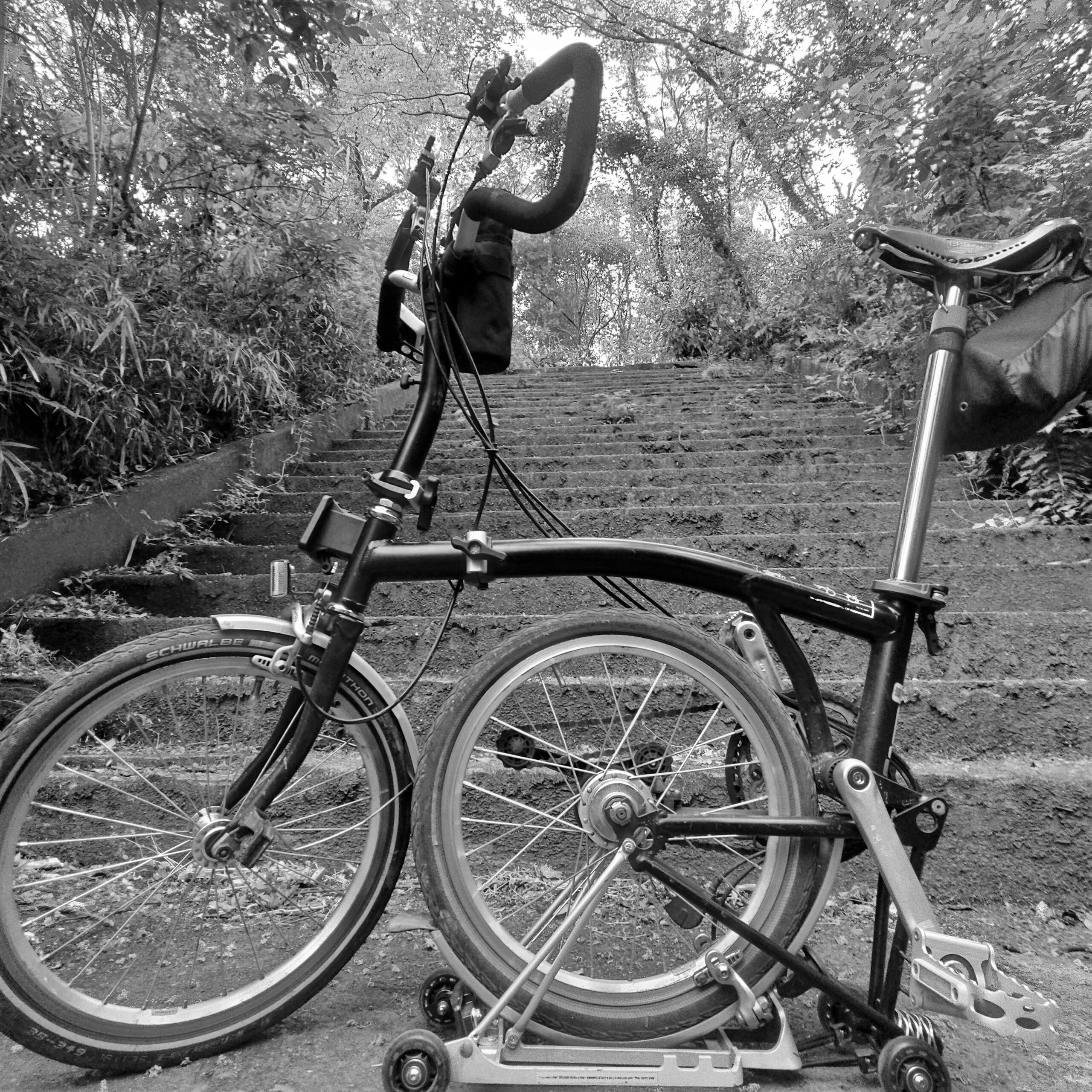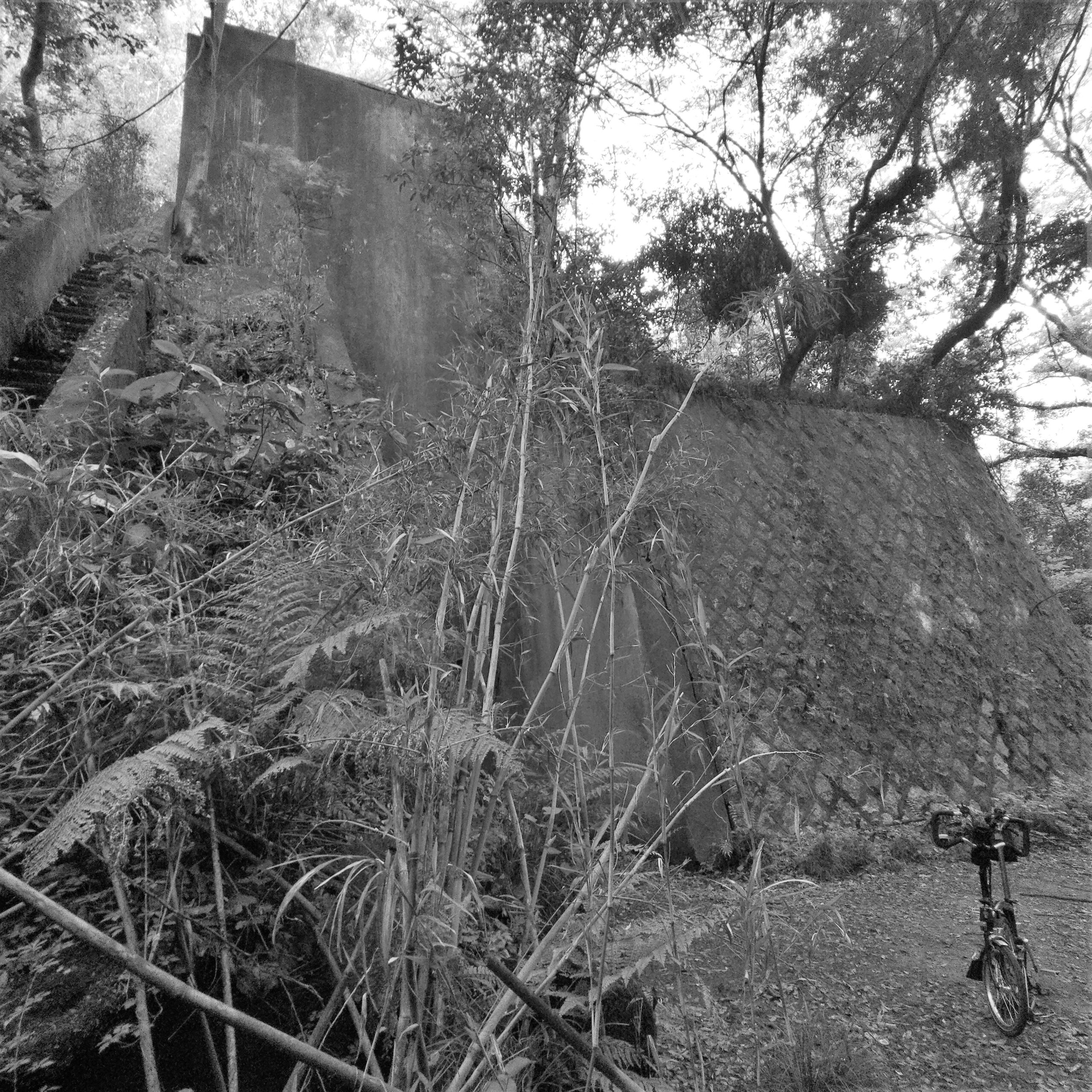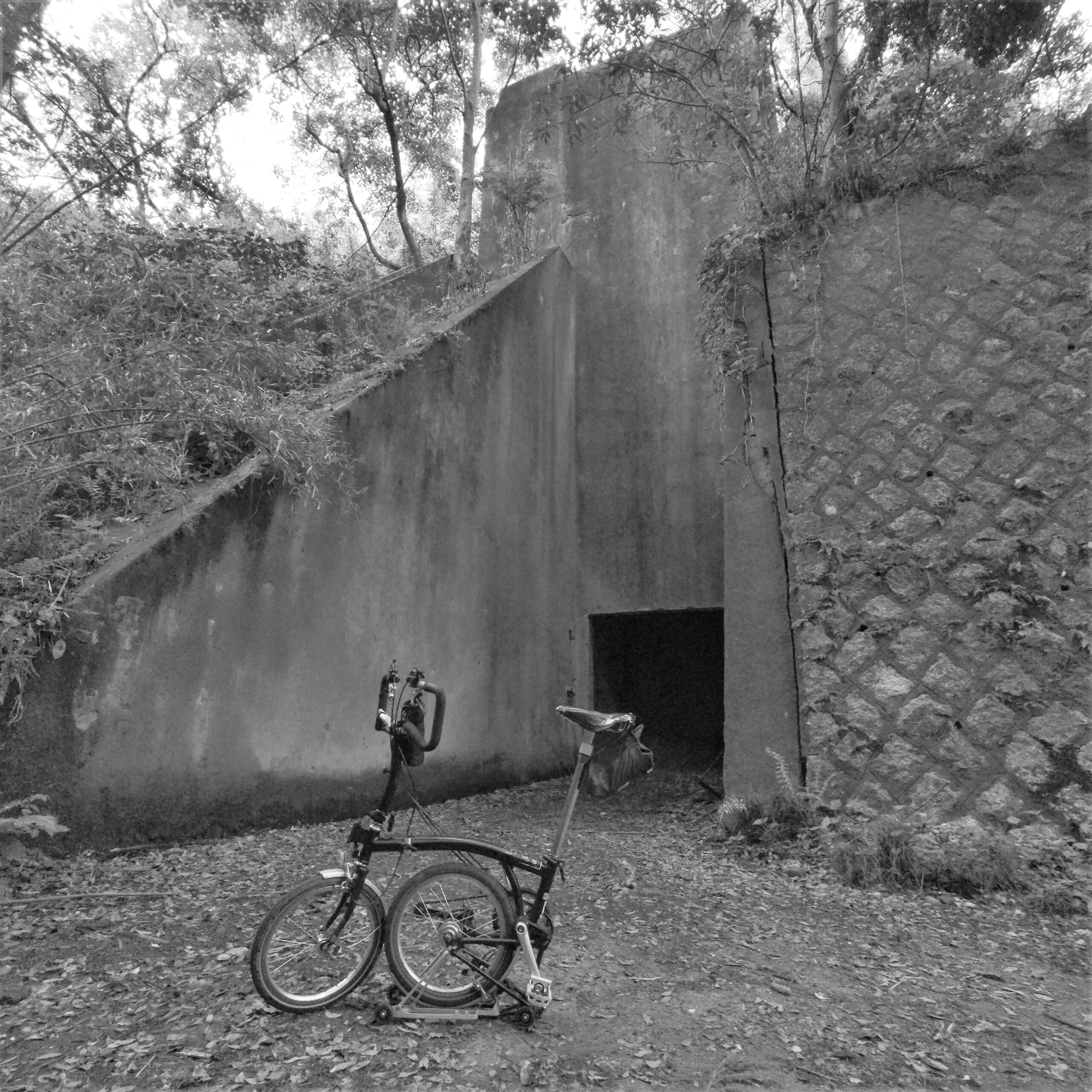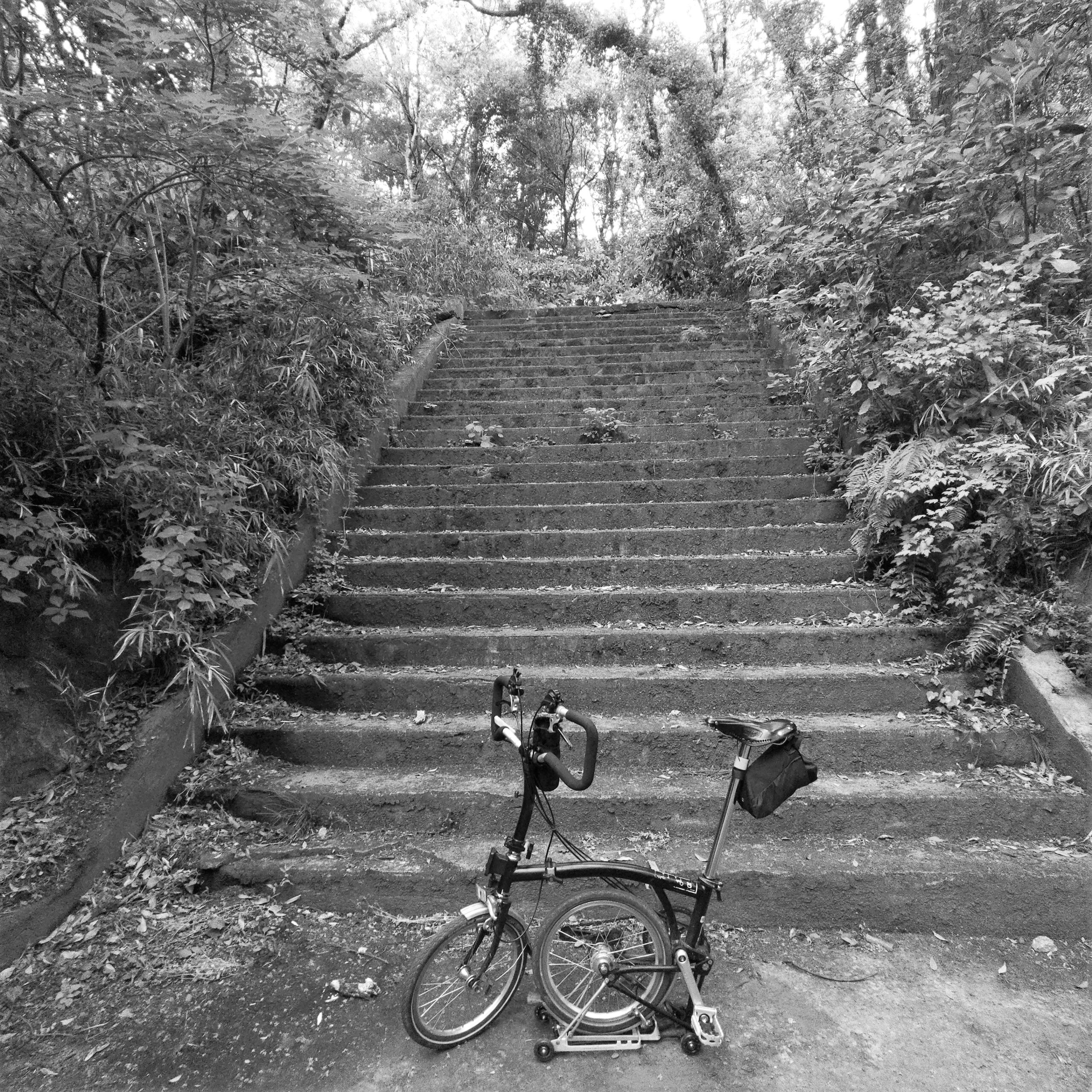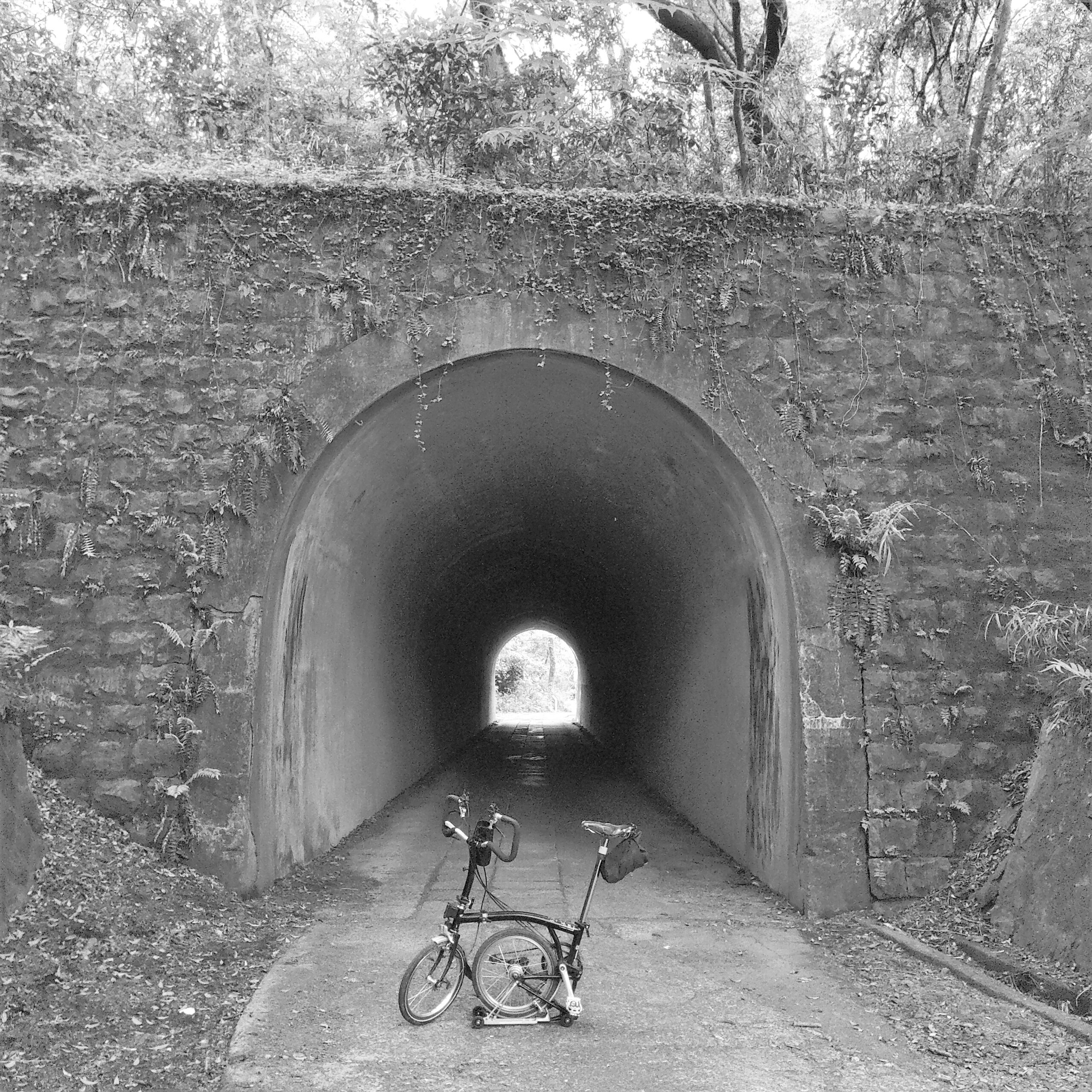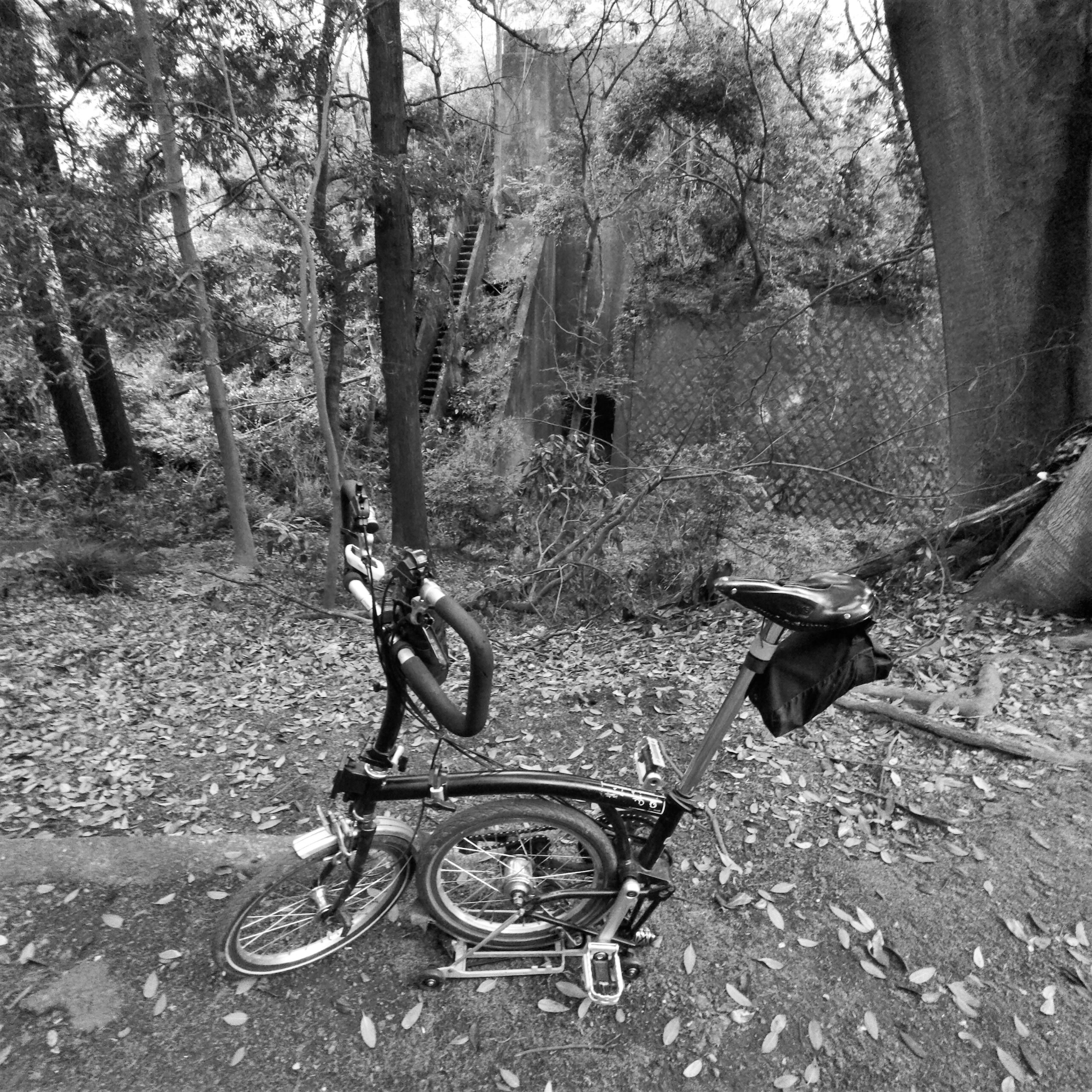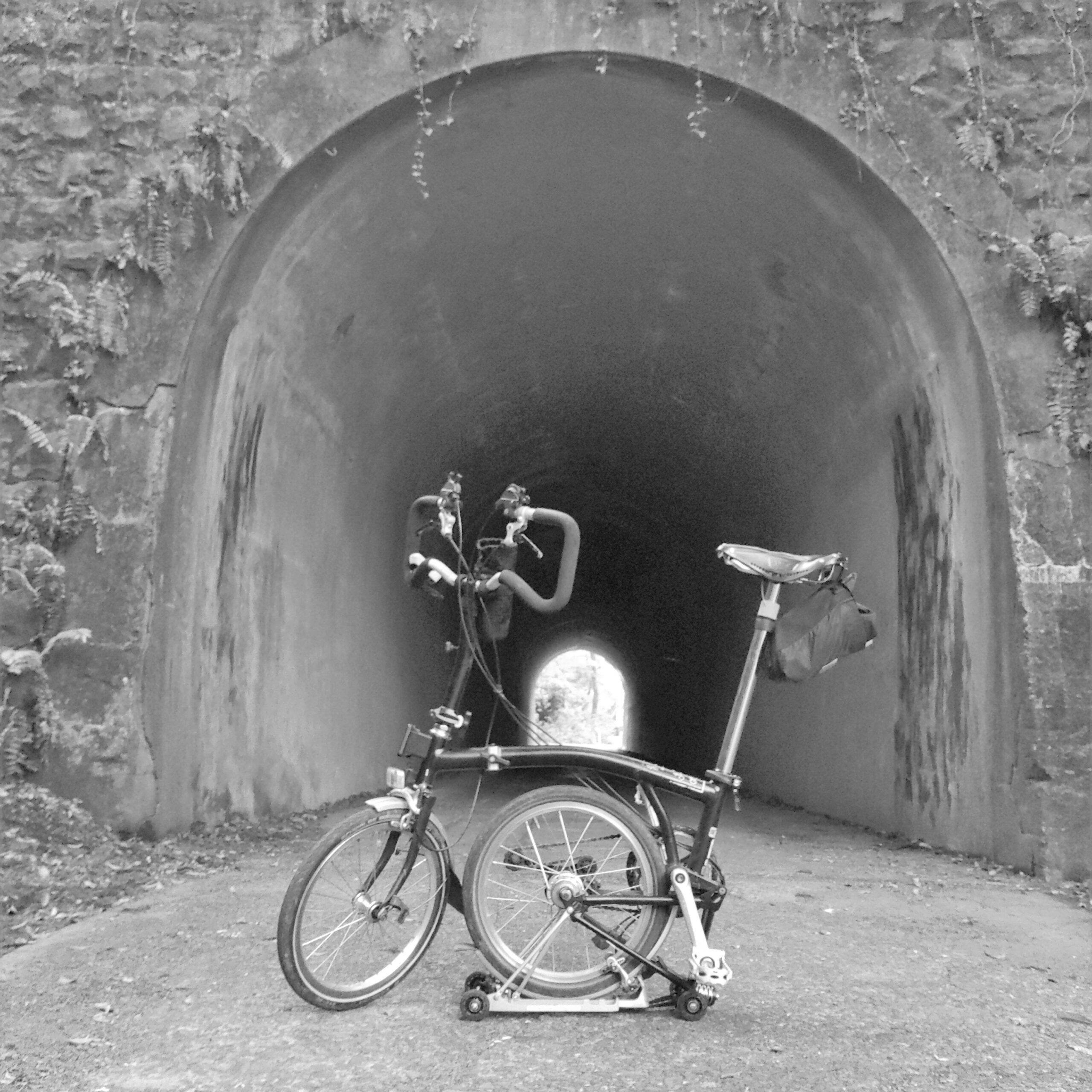As fate would have it, I got to ride my Brompton in a post-apocalyptic landscape over the weekend, making for some eerie-looking pics.
It’s not the first time I have been able to ride through the area, but it was Brommie’s first chance to do so.
Although the scenes appear post-apacolyptic (and I referred to them in that manner), it really wasn’t the case.
We were in Tama Hills Recreation Area.
I woke early, as is my wont, and got on the bike I had stored in the cabin where we had stayed.
The camp area was deserted and the only noise was the morning calls of the many birds.
And my huffing, puffing and wheezing.
Tama Hills is not fold-up friendly.
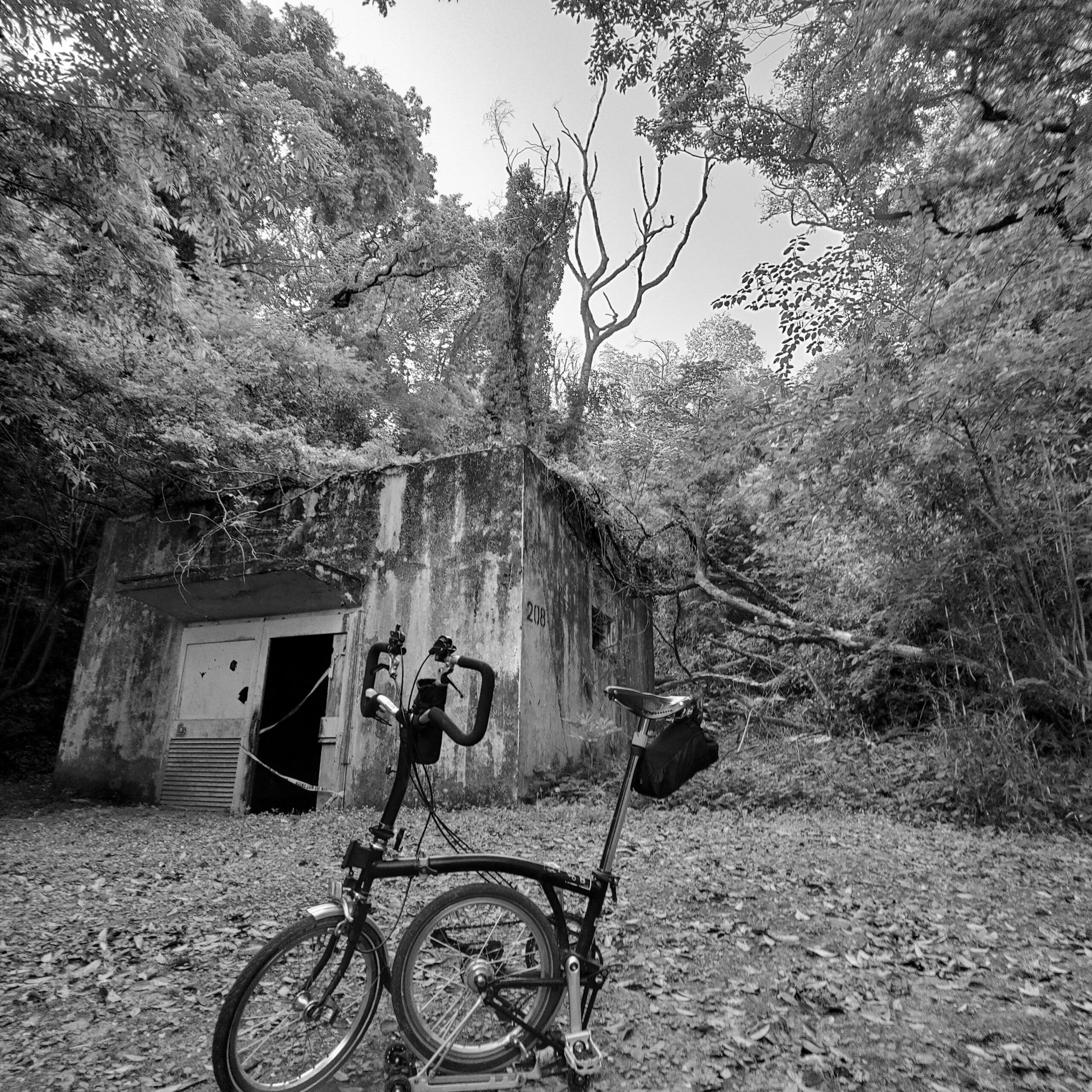
Roads date back to the pre-war construction by the Imperial Japanese Arm (IJA). They are concrete and have not been well-maintained, making them bumpy, rough and full of potholes.
Some of the riding is also off-road.
Brommie isn’t really made for that type of riding.
Tama Hills has an interesting history.
What is now a recreation area for US Forces, Japan, was built as an arsenal by the IJA.
The IJA used the area as an arsenal depot.
Weapons were delivered from the nearby Sagami Military Arsenal.
From there, the weapons would be either stored or delivered to other facilities in the Tama region, central Tokyo or south to Yokohama and Yokosuka.
The Tama Hills facility was constructed in the1930s and would continue operating throughout World War II.
US Forces confiscated the facility at the end of the war and it remained largely unused until the early 1980s.
To this day, the area remains heavily forested.
The canopy would save it.
U.S. Army Air Corps B-29 Superfortress bombers obliterated Tokyo during the war.
They bombed nearby areas including Chofu, Fuchu, Machida and Hachioji.
But Allied forces never found Tama Hills and it remained untouched when all around it was flattened.
Tama Hills was connected to the Sagami Arsenal, which Occupation Forces renamed the Sagami General Depot and continued using it through the postwar period, and is now being partially returned to Japanese ownership.
The facilities were linked by what was once known as Tank Road.
The road was located until a thick canopy of trees.
The IJA would send tanks and other weapons along the road, but the canopy protected them from detection by the bombers for the duration. Large parts of the road remain in use as a cycling path to this day, and other sections are also used as hiking trails.
Eventually, Tama Hills would be rehabilitated by groups of airmen from nearby Yokota Air Base from the 1908s onward, who turned it into a recreation area.
There is also a considerable degree of protected landscape and wildlife within the facility due to its inaccessibility to the general public.
As seen from this photo essay, plenty of ruins remain scattered around the recreation area to stand as testimony to the facility’s role in Japan’s past, and as a monument of sorts to the postwar U.S.-Japan relationship (imposed as it is).
It should be noted though, that the site is developed in a pristine manner only the U.S. military is capable of when it comes to military facilities. Glamping outweighs camping and the entry area is pristine, so beautifully kept that one friend who visited several years ago likened it to The Village from The Prisoner.
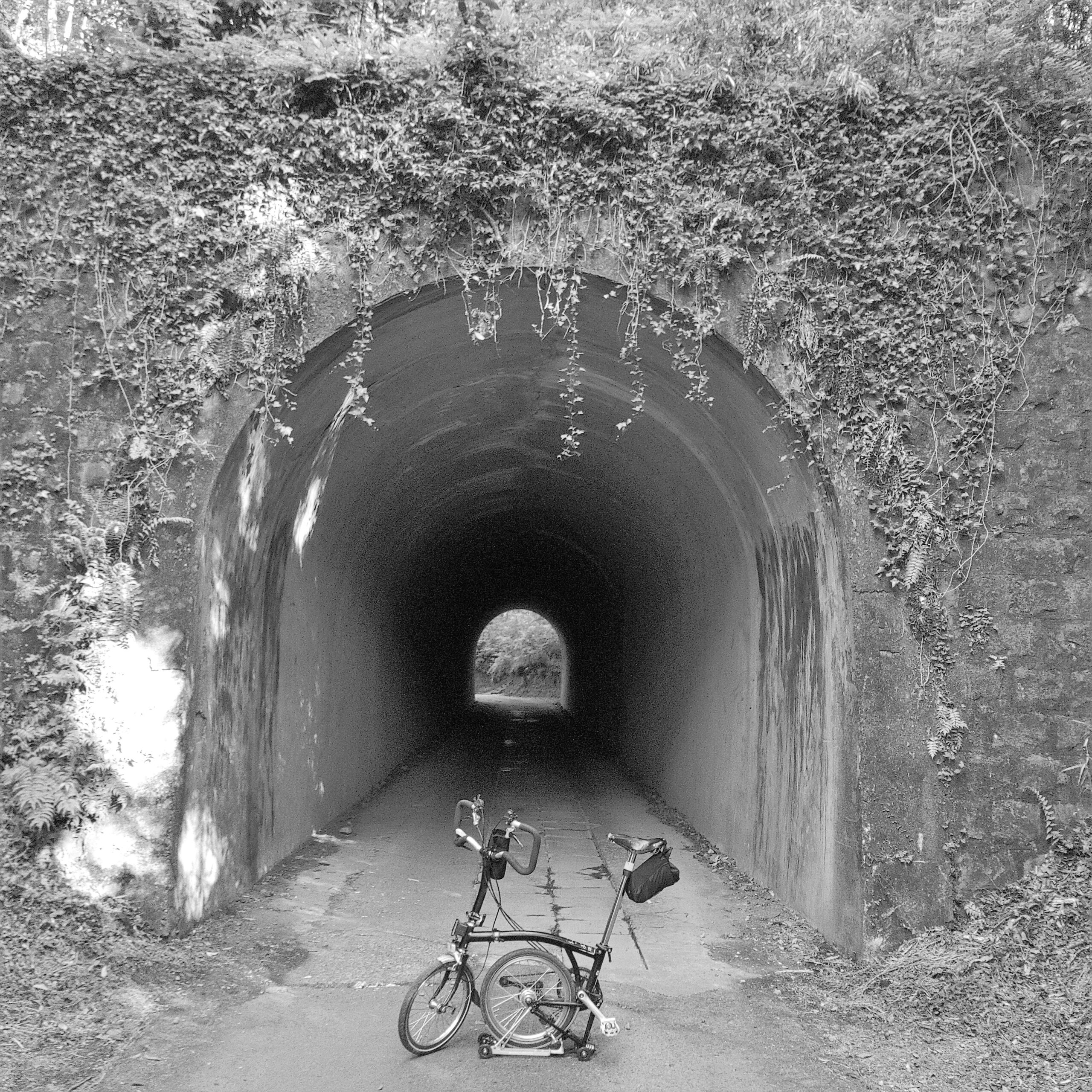
There is, indeed, an air of the otherworldly about Tama Hills. Be seeing you!


